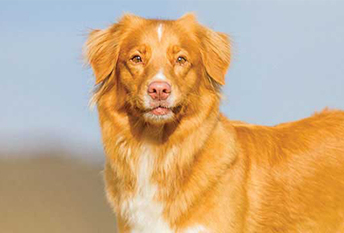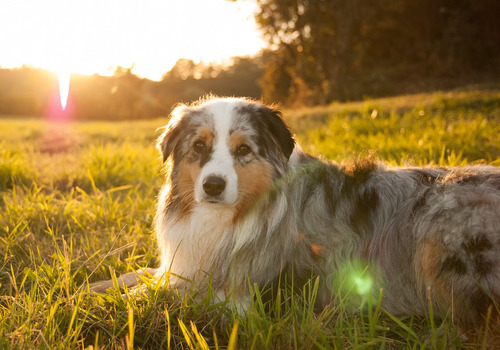Australian Shepherds shed year round and shed very heavily twice a year during season changes. To keep shedding under control and mats from forming in the coat, Aussies should be brushed weekly, year-round, several times per week during periods of heavy shedding. This breed is relatively clean by nature so baths only need to be given as-needed when the dog is dirty or begins to emit an odor.
Regular ear cleanings, teeth cleanings, and nail trimmings should also be part of the grooming regimen in order to promote optimal health and appearance.
A high-energy, athletic dog, the Aussie needs a great deal ofexerciseon a daily basis. At a minimum, he should have a large, fenced-in yard to run around in for at least an hour or two daily. Aussies bond closely with their owners and love to accompany them on long walks—or, better yet, hikes.
Once an Aussie leaves puppyhood behind, and his skeletal system is fully formed, he can make a great running companion. The best course, however, is to give the Aussie a job, whether that is herding livestock, shepherding children, or competing in canine events such asobedience,herdingoragilitytrials, or dock diving.
An Australian shepherd should be fed two meals a day of up to 1.25 cups of dry dog food per meal. The amount will depend on your dog's size, activity level, age, and other factors. Be sure to monitor your dog's weight and address any tendency to be overweight. Discuss your dog's nutritional needs with your veterinarian to get appropriate recommendations.
Aussies are generally healthy dogs, and aresponsible breederwill test breeding stock for health concerns such aship dysplasia, epilepsy, cataracts and certain forms of cancer. AnAussie’s earsshould be checked regularly to remove foreign matter and avoid a buildup of wax, andhis teethshould be brushed regularly.
Early socialization and obedience training are both musts for the Australian Shepherd. One of the most frequent reasons Aussies end up in rescue situations is owners couldn’t (or wouldn’t) constructively channel the breed’s boundless energy through training.
Aussies bond strongly to their families and so can be territorial and overprotective of their owners’ property, and they can become destructive if left without companionship for long periods too often. Fortunately, that loyalty combined with the breed’s keen intelligence and high energy makes them very easy to train.













